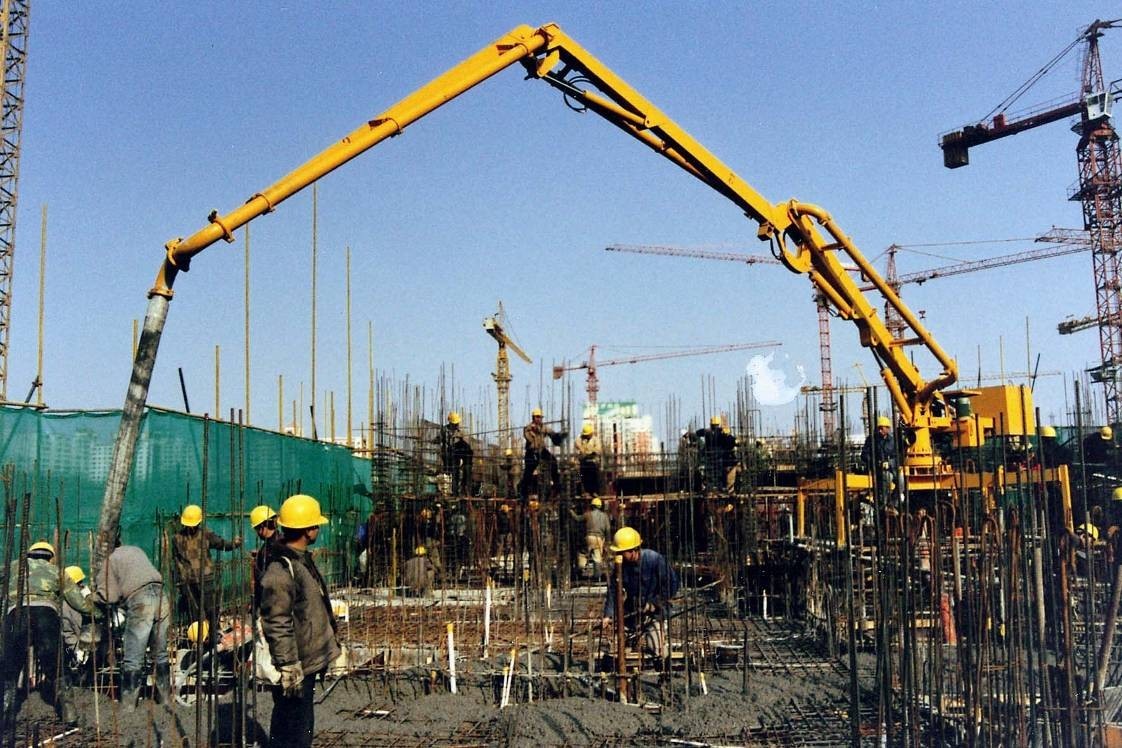What Is A Concrete Placing Boom?
What Is A Concrete Placing Boom?
A concrete placing boom is a mobile, truck-mounted machine with a powered, flexible arm (called a knuckle boom) that can rotate and lift to place concrete through a pipeline attached to or incorporated into the arm. It is used to pump concrete to the desired location during construction.
Placing booms are used in high-rise buildings where it is not possible to pour concrete directly. They consist of a main steel tube or box section and an arm with hinges. The concrete is pumped through a pipe connected to the arm using a static concrete pump.
The capacity of the pump is calculated based on the height of the high-rise building and the maximum pressure on the concrete, as specified by the manufacturer
Placing booms are typically supported on steel beams (saddle beams) or the concrete floor slab, and the reactions of the supporting structure must be designed according to the manufacturer’s specifications.
In order to reach higher levels, the placing boom can “jump” vertically on the saddle beams, but this requires openings in the core or a provision in the slab to support it on each floor. The collar connecting the placing boom to the saddle beams or slab must be fixed in three locations: two in level one and three during the jump.
The jump of the placing boom is self-powered using built-in jacks, so no cranes are needed for this process, except for the initial installation.
How does Concrete Placing Boom/Pumps Work?
A concrete pump works by using a return pressure piston in one pressure cylinder to create a vacuum, which sucks the medium from the feed funnel into the cylinder. At the same time, the advancing delivery piston pushes the contents of the other delivery cylinder through the transfer tube into the delivery line.
When the stroke is complete, the pump switches and the transfer tube moves in front of the other filled pressure cylinder. The pressure pistons then change direction.
Concrete pumps are powered hydraulically and have various control options depending on the manufacturer. Some important factors to consider when selecting a concrete pump are the discharge pressure, machine weight, price, and system complexity.
Modern concrete pumps can reach fluid pressures of up to 400 bar and flow rates of up to 200 m³/h using piston-type pumps.
Types of Concrete Pumps
A concrete pump is a machine used to transfer liquid concrete by pumping it to a desired location. There are different types of concrete pumps, including boom pumps and line pumps.
Boom pumps are mounted on a truck or semi-trailer and use a remote-controlled, articulated robotic arm (called a boom) to accurately place the concrete. They are capable of pumping large volumes of concrete and are less labor-intensive to operate compared to line pumps.
Line pumps, also known as trailer-mounted concrete pumps, can be mounted on a truck or placed on a trailer. They require steel or flexible hoses to be attached to the outlet of the machine and used to feed the concrete to the application site.
The length of the hoses can vary, with typical lengths ranging from 10 to 50 feet, depending on the diameter. Line pumps are used for smaller volume concrete placement projects such as swimming pools, sidewalks, single-family home slabs, and most ground slabs.
There are also skid-mounted and rail-mounted concrete pumps, which are less common and used only on specialized job sites such as mines and tunnels.

